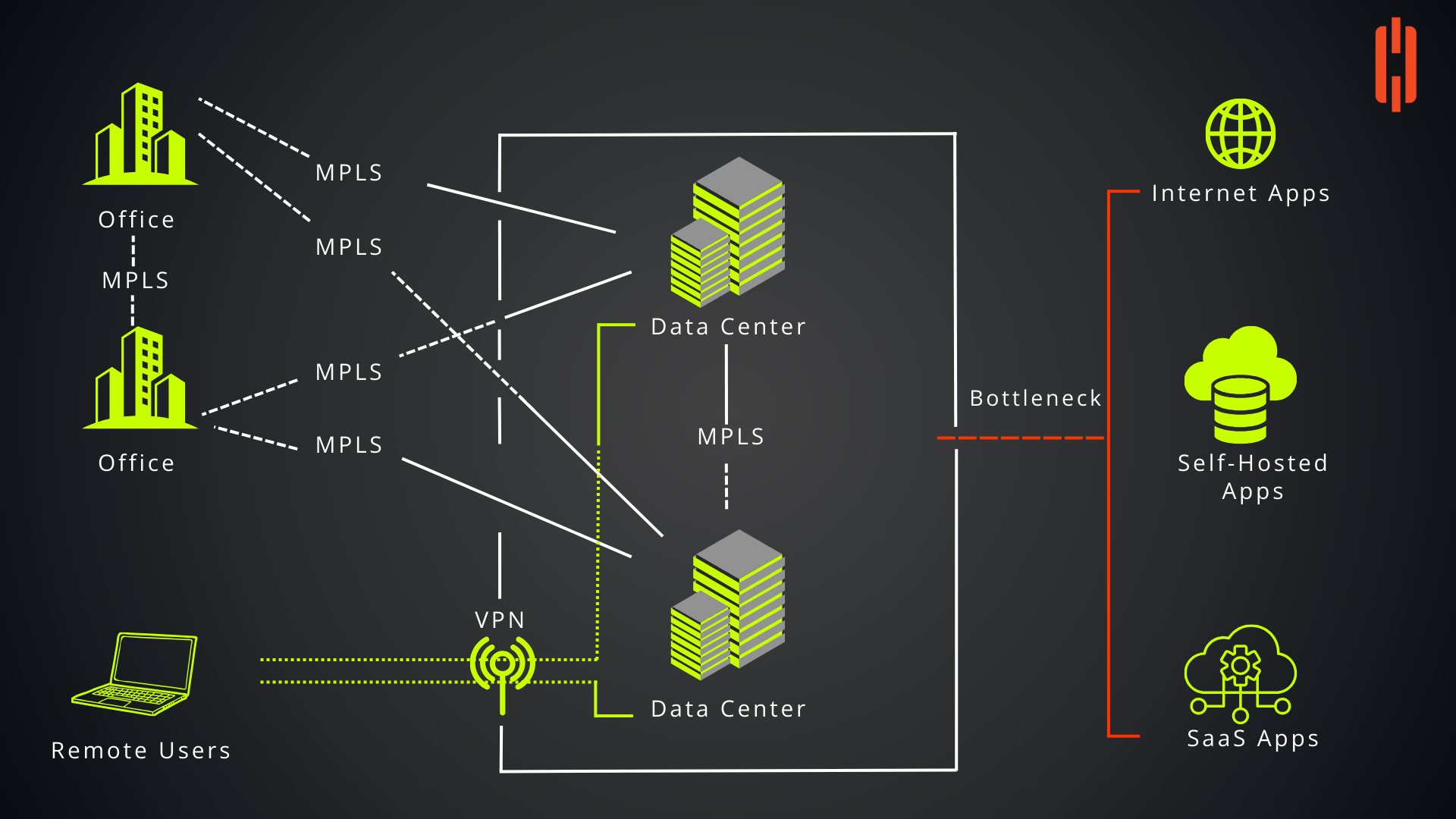Platform
Platform
Everything you need to run a secure global network—in a single system.
Solutions
Solutions
Learn how our solutions were designed to help you scale your IT resources
Company
CommandLink
Let's talk about how we can help you!
Partners

What Are the Challenges of Traditional MPLS Networks in Modern IT Infrastructure?
Understanding the Limitations of MPLS in Today’s Network Architecture
Multi-Protocol Label Switching (MPLS) has been a staple in enterprise networks for decades, providing reliable and secure data transport across geographically dispersed locations. However, as businesses evolve and adopt cloud services, remote work, and SaaS applications, the limitations of traditional MPLS networks are becoming increasingly apparent.
How Does MPLS Create Bottlenecks in Network Performance?
Traditional MPLS networks are designed for point-to-point connections, routing traffic through centralized data centers. As businesses adopt cloud-based applications, this architecture creates a significant bottleneck. All traffic, including cloud-bound traffic, is backhauled through the data center, leading to increased latency and degraded user experience. This bottleneck slows down access to critical cloud services and reduces overall network efficiency.
Why Is MPLS Inefficient for Remote Users?
With the rise of remote work, employees are increasingly relying on VPN connections to access corporate resources. MPLS networks, designed primarily for static office locations, struggle to efficiently support the dynamic nature of remote access. VPN connections often add another layer of complexity and latency, further exacerbating performance issues for remote users who need reliable and fast access to cloud applications and corporate data.
What Are the Cost Implications of MPLS Networks?
MPLS networks are costly to scale and maintain, especially as organizations expand their operations globally. Each new office or remote site requires additional MPLS lines, which come with high provisioning costs and long lead times. This makes MPLS an expensive solution, particularly when compared to modern alternatives like SD-WAN, which can leverage multiple, lower-cost internet connections for better performance and redundancy.
How Does MPLS Impact Access to SaaS and Cloud Applications?
As organizations continue to migrate their applications to the cloud, the traditional MPLS architecture becomes less effective. MPLS was not designed with cloud-first strategies in mind, leading to suboptimal performance when accessing SaaS and cloud-based applications. The need to route cloud-bound traffic through the data center increases latency and reduces the responsiveness of these critical business applications.
Is MPLS Still a Viable Solution for Modern Enterprises?
While MPLS provides reliability and security, its limitations in a cloud-centric world cannot be ignored. Modern enterprises need more agile and scalable solutions that can meet the demands of cloud applications, remote work, and global connectivity. SD-WAN, with its ability to use multiple internet connections, offers a compelling alternative, providing better performance, reduced costs, and more straightforward management.
Conclusion: Evolving Beyond MPLS
As the demands on enterprise networks grow, it's essential to evaluate whether traditional MPLS can keep up with your organization's needs. While MPLS will continue to play a role in many networks, integrating modern solutions like SD-WAN can help overcome the limitations of MPLS, ensuring your network is ready for the future.